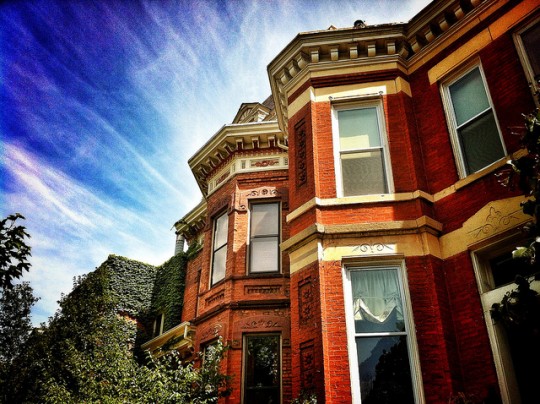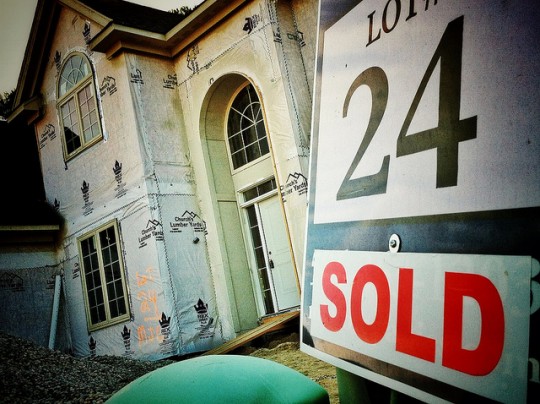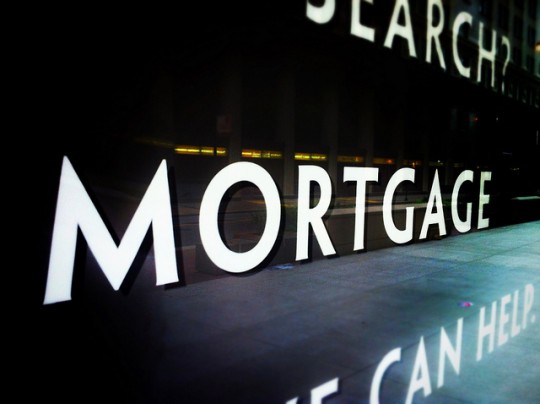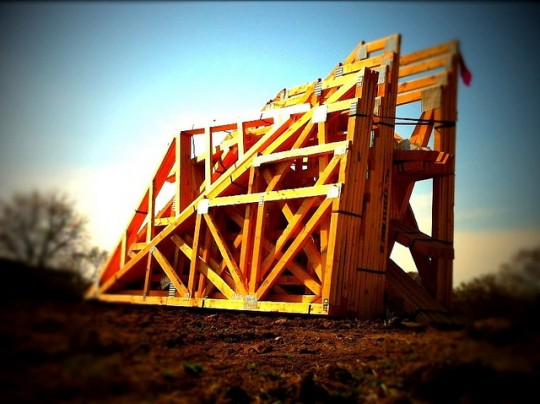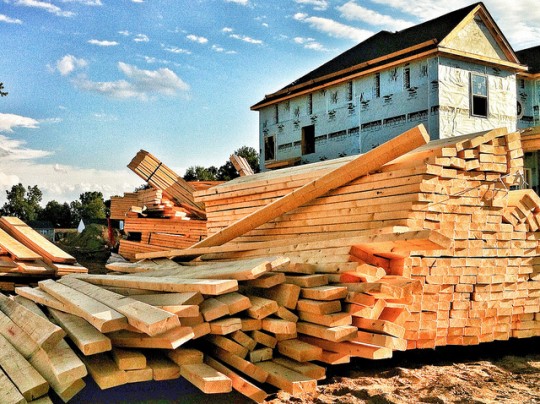Consumer confidence has rebounded since October’s government shutdown and should continue to strengthen in 2014 as fiscal and monetary policy issues begin to clear. According to Fannie Mae’s Economic & Strategic Research Group, the improvement should lead to gains in consumer spending, manufacturing activity, and economic growth – all of which will contribute to the housing market’s continued recovery. Doug Duncan, Fannie Mae’s chief economist, said housing will continue on a modest upward trend toward more normal levels in 2014, with additional home price increases tempered by declining investor activity in the market. Duncan said housing indicators met the group’s expectations for 2013 and should continue their gradual march toward normal in the new year. More here.
Archive for December 2013
New Home Sales Beat Expectations
According to estimates released by the U.S. Census Bureau and the Department of Housing and Urban Development, new home sales fell 2.1 percent in November from October’s pace. Despite the dip, sales of newly built, single-family homes are now 16.6 percent above last year’s estimate. And though November’s pace slipped, October’s previously reported rate was revised upward by 30,000, making that month’s pace a post-recession high. August and September’s sales rates were also revised upward by a total of 58,000. With those revisions, November’s rate – while slower than October – still beat economists’ expectations for the month. The new data indicates that the housing recovery is on track and buyers have largely adjusted to higher prices and mortgage rates. The median sales price of new houses sold in November was $270,900; the average sales price was $340,300. There was a 4.3 month supply of new homes available for sale at the end of the month. More here.
Trends Point To Healthy Housing Market in 2014
In 2013, home prices and buyer demand both spiked as the housing recovery took hold in markets across the country. Double-digit increases in home values brought prices to a level last seen in 2004. But, according to Zillow’s November Real Estate Market Report, annual and monthly price trends indicate the robust recovery seen throughout 2013 is beginning to slow to more sustainable levels. The slowing price growth is partly driven by decreasing negative equity rates. As homeowners recoup value lost during the recent recession, more of those homes are put up for sale which increases inventory levels and normalizes price gains. And in addition to an increasing supply of previously owned homes, new home construction is expected to ramp up over the next year, adding further relief to constrained inventory levels across the country. If these trends continue, 2014 will likely see improved for-sale inventory levels, slower price increases, and more potential buyers entering the market to purchase homes. More here.
Existing Home Sales Fall 4.3 Percent In November
Sales of previously owned homes fell 4.3 percent in November, according to estimates from the National Association of Realtors. The drop slowed sales to a pace 1.2 percent below last year’s rate, marking the first time in more than two years that sales were below year-ago levels. Lawrence Yun, NAR’s chief economist, said the market is being squeezed by constrained inventory. According to Yun, there is pent-up demand for owner-occupied housing and, though household formation will inevitably burst out, limited supply is slowing the sales pace. It’s also driving price increases. The national median existing-home price for all housing types was $196,300 in November, up 9.4 percent from last year. Median prices are highest in the West, where the median sales price was $284,400. The Midwest had the lowest median price at $151,100. More here.
Mortgage Demand Stalls As Rates Rise
The Mortgage Bankers Association’s Weekly Applications Survey covers more than 75 percent of all U.S. residential mortgage applications and is a measure of both refinancing and home purchase demand. According to the most recent release, total mortgage loan application volume fell by 5.5 percent last week from one week earlier. Both the Refinance Index and the Purchase Index fell 6 percent from the previous week. Mike Fratantoni, MBA’s vice president of research and economics, said the market index fell to its lowest level in more than a dozen years. According to Fratantoni, purchase and refinance demand dropped due to increasing interest rates. The average contract interest rate for 30-year fixed-rate mortgages with conforming loan balances edged up last week, reaching its highest level since September. More here.
New Home Construction Surges, Signals Stronger Economy
According to the U.S. Census Bureau and the Department of Housing and Urban Development, new residential construction spiked 22.7 percent in November and is now nearly 30 percent above last year’s level. The increase was the largest since January 1990 and brought housing starts to a seasonally adjusted annual rate of 1,091,000. Despite the improvement, new home construction remains below historical average. From 1959 through 2000, housing starts averaged 1.5 million per year. Still, with single-family housing starts up 20.8 percent month-over-month and demographics and household formation suggesting more growth, new home construction should continue to improve. The gains were better than economists expected and indicate a strengthening economy. More here.
Builders Optimistic About New Home Sales
All three components of the National Association of Home Builders Housing Market Index improved in December. The three index components, which measure current sales conditions, sales expectations, and traffic of prospective buyers, are scored on a scale where any number above 50 indicates more builders view conditions as good than poor. According to the most recent release, the current-sales component jumped six points to 64, while the index measuring expectations for future sales rose two points to 62 and traffic of prospective buyers increased three points to 44. David Crowe, NAHB’s chief economist, said the recent spike in mortgage rates has not deterred consumers, as rates are still near historically low levels. Crowe believes this month’s gain is due, in part, to the release of pent-up demand caused by the uncertainty surrounding October’s government shutdown. Overall, builder confidence in the market for newly built, single-family homes improved four points to a reading of 58. More here.
